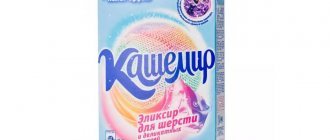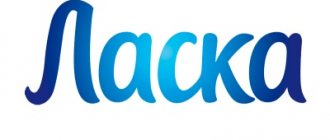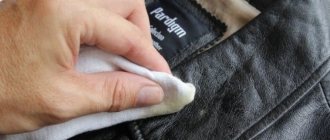The employer, at its own expense, is obliged to provide employees with special clothing and, in accordance with Art. 221 of the Labor Code of the Russian Federation and order of the Ministry of Health and Social Development of Russia dated 06/01/2009 N 290n (as amended on 01/12/2015) “On approval of inter-industry rules for providing workers with special clothing, special footwear and other personal protective equipment”, organize washing, drying and repairs. In the article we will tell you which regulatory documents determine the rules for washing workwear, how washing is organized, and the features of caring for PPE.
General information
General intersectoral rules for washing workwear are given in the third section of Order of the Ministry of Health and Social Development of Russia dated June 1, 2009 N 290n. There is no single document that would contain requirements for all types of workwear, so companies are guided by regulatory documents developed for each industry separately.
According to clause 27 of Order No. 290n of the Ministry of Health and Social Development of Russia dated June 1, 2009, an employee does not have the right to take PPE outside the employer’s territory, which means that staff are prohibited from washing protective clothing at home; this must be organized by the employer.
The document establishing the frequency of washing workwear (clause 7.14 of the Intersectoral Rules approved by Resolution of the Ministry of Labor of the Russian Federation of June 17, 2003 No. 36) has become invalid. For some industries, regulatory documents indicate periods for washing PPE, but not for all. Therefore, many companies independently approve the washing schedule in the local regulations on the issuance of workwear or by a separate order. Based on the specifics of using PPE in industries where there is no heavy pollution, washing is organized, for example, once a week; in other enterprises, workwear must be washed every three days. Employees must notify their employer of the additional need to wash and repair work clothing.
Selecting detergents
To maximize the removal of contaminants, it is necessary to choose the right product for home washing of dirty workwear.
The modern chemical industry is ready to present many different products that allow you to remove any stains.
The most gentle way is to soak and wash clothes using ordinary laundry soap, possibly with the addition of soda.
To remove more stubborn stains, you can use active alkalis, such as sodium, but you need to use it very carefully and in small concentrations, otherwise you can damage the fabric structure.
Sodium hydroxide can be used when boiling work clothes, if the care instructions allow it, you need to stir the clothes periodically during the boiling process, otherwise they may not clean evenly or stick to the bottom of the pan.
To get rid of oily, greasy or petroleum stains, you need to use special products developed on the basis of petroleum products; dishwashing detergents can also help.
Note: high-quality workwear should be able to withstand up to 20 washes painlessly.
How is washing organized?
Two ways to wash workwear:
- at the enterprise (the employer purchases washing machines and dryers, entrusts washing and repairs to dedicated employees);
- if the employer does not have the technical capabilities to create a laundry on the organization’s territory, third-party companies are involved in this work.
Streamlining the washing process should be regulated by local regulations of the organization. It is necessary to provide for the procedure for handing over workwear, for example, individually by each employee or centrally from one department; who is responsible for delivery and acceptance of work kits; where contaminated overalls will be stored, and where clean ones, etc.
A civil contract is concluded with third-party organizations. When choosing a laundry, you should pay attention to the availability of specialized equipment that removes persistent industrial stains. As mentioned earlier, the employee does not have the right to take protective clothing outside the employer’s territory, therefore the process of delivery and return of personal protective equipment must be specified in the contract.
Laundry schedule and other organizational documents
From the above regulatory documents it is clear that there are currently no specific terms for washing workwear in the legislative and regulatory framework. At the same time, the employer is obliged to do the laundry.
A workwear washing schedule will help resolve the issue of the frequency of washing PPE in an organization. It is part of the LNA - “Regulations on the issuance of PPE”, approved by the order of the organization. Taking into account the peculiarities of using special sets of clothes, the organization develops its own washing schedule. Typically it contains:
- names of departments;
- Full name of the responsible persons;
- time of delivery (week in order in the month and day of the week);
- information about handing over the laundry (signatures of the handing over person, the receiving person, number of sets);
- information about the return from washing (signatures of the handing over and receiving persons, date, number of sets).
Usually this schedule also includes a block on the repair of personal protective equipment. It is formatted similarly. To record the handing over of workwear by workers for washing and return to production, a special statement is used (methodological instructions, approved by the Ministry of Finance 135n dated 12/26/02, paragraph 66). It is signed by the person financially responsible for PPE.
IMPORTANT! Reference information on the standards for the free issuance of workwear, safety footwear and other PPE from ConsultantPlus is available at the link
If clothes are washed during the work week and not on the weekend, workers must be provided with replacement sets.
Documents confirming compliance with legal requirements must be carefully stored. Rospotrebnadzor, at the time of a scheduled or unscheduled inspection, has the right to demand any of them, as stated, in particular, on the official website of the Department. At the same time, the organization should not receive special permission from Rospotrebnadzor for its activities of washing employees’ workwear.
On a note! An employee’s refusal to hand over protective clothing for washing is not a basis for releasing the employer from the obligation to provide washing of PPE (Letter of the Ministry of Labor dated 5/06/18, review of current issues for the period 01/05/18-31/05/18).
Briefly
- The requirements of Rospotrebnadzor regarding the organization of washing workwear at an enterprise are based on a number of legislative acts and norms of both a federal and industry nature. Based on any of them, Rospotrebnadzor can conduct an inspection and identify violations, so washing workwear requires a serious approach and control.
- Washing of workwear is carried out either on site or by concluding a GPC agreement with a third-party laundry.
- There are no specific terms in the legislation regarding the frequency with which washing should be done. They are established by the LNA, the Regulations on PPE, approved by order of the organization.
- A schedule for washing special sets of clothing is required: by department, date, person responsible for receiving and handing over items. Reception and issuance of PPE to employees is carried out according to a list.
- The employer is required to keep all documents. They confirm compliance with the rules for washing workwear. A Rospotrebnadzor official has the right to demand any document during an inspection.
Features of care for workwear
The main methods for cleaning workwear from contaminants:
- washing (washing with water, mechanical action and detergents);
- dry cleaning (removing dirt and stains using solvents);
- aqua-cleaning (a gentle technology for processing products in a small amount of water using special cleaning agents).
When choosing a method, it is necessary to take into account the type of workwear, the fabric from which the work kit is made, as well as the nature of the contamination. It is necessary to remember the care rules that are indicated on the internal tags of the workwear.
Most regular laundry detergents are not suitable for professional PPE care. Special highly concentrated preparations are used to wash work clothes. They contain nonionic and amphoteric surfactants, alkaline and other additives that increase the cleaning ability of the preparations.
The product CHIMITEK STIRAL-PROFI is suitable for removing complex oil, fat and industrial stains from work clothes. To remove household, oil and fat, pigment stains on items made of white and colored fabrics – CHIMITEK WASHING-WHITE. The product not only removes dirt, but also refreshes the color of the product.
Both products do not contain hydrocarbon solvents, are used for washing workwear made of cotton, blended and synthetic fabrics, and are easy to rinse without leaving detergent components on the fabric. During the washing process, stains that have penetrated deep into the structure of the fabric are removed.
Automation of accounting for special clothing and personal protective equipment using the Occupational Safety and Health program
Let's take a closer look at the work of the Occupational Safety and Health program. To get started, you need to fill out the main directories: “Organizations”, “Divisions”, “Professions”, “Individuals”.
The program has a block for exchanging data with standard configurations on the 1C:Enterprise platform: “Manufacturing Enterprise Management”, “Salaries and Personnel Management”, “Enterprise Accounting”.
To fill in, and most importantly to update, data, you can use data loading processing. The program is already configured and to start the exchange you just need to specify the required database as the source. After the exchange, all necessary reference books will be completed.
Now we can set the sizes of individuals in two ways:
- Enter the size data into the personal card of the individual.
- Use the special processing “Setting the sizes of individuals”. This option is more convenient when filling out dimensions initially, when you need to fill out data for all individuals.
It is also possible to maintain the sizes of the clothing range using the “Occupational Safety and Health” program. Nomenclature in accounting or warehouse accounting systems may not be maintained with a sufficient degree of detail in size. It's not needed there. And to provide for workers, a labor protection specialist is required. For this purpose, the program provides accounting in terms of characteristics.
When transferred to the Occupational Safety and Health program, the data obtained from accounting systems must be specified in size.
conclusions
- Requirements for organizing the washing of workwear are based on a number of regulatory documents, including those of an industry nature.
- Washing of workwear is organized at the expense of the employer on the territory of the enterprise or performed by a third party.
- The washing process at the enterprise must be regulated by local regulations, and a civil contract is concluded with third-party laundries.
- When choosing a washing method and detergents, it is necessary to take into account the rules for caring for workwear, as well as the type of contamination.
- Proper care of workwear extends its service life and increases the degree of protection for workers.
General requirements for washing workwear
Typically, organizations take into account Order No. 290n, to which Section No. 3 is devoted to washing uniforms. Under special working conditions, similar industry-specific, special documents are used.
The washing rules themselves are described in SanPiN. For example, order No. 141 dated 06/11/03 of the chief sanitary doctor puts into effect several Sanitary Regulations and Regulations working in industry, agriculture, communications, and construction. Section 9 of this is devoted to the maintenance of work clothes, and if there are radioactive substances at the enterprise, then they are guided by SanPiN 2.2.8.46-03 (decontamination of work clothes).
The procedure for issuing and returning workwear
Composition of the work. Re-adjustment and adjustment of the machine for various technological modes of washing clothes using a software control panel. Transporting laundry to the car. Loading laundry into the machine. Starting the machine, transitions and monitoring the washing process. Opening the lid and unloading laundry from the machine. Delivery of linen.
PS We are publishing information about Rostrud’s explanations, because HR practitioners should know the position of the agency that conducts inspections on them. At the same time, one must always take into account that the opinion of Rostrud is not a legal act. Replacement of milk distribution with compensation payments is provided only in the case of a written application from the employee. This form of replacement is regulated by law and must be strictly observed.
How to deal with fuel oil
Some of the most difficult stains are fuel oil stains, which are most often found on the clothing of workers involved in various types of machinery.
You can wash a car mechanic’s overalls smeared with fuel oil using a number of means:
- turpentine;
- ammonia;
- petrol;
- acetone;
- solvent;
- soda;
- special means
The special product Bioclin-S does a good job of removing oil stains. It was developed for washing oily workwear; it can be used as a stand-alone SMS, or used as an additive to powders for hand and machine washing. The product is available in canisters with a minimum packaging of 5 liters.
It must be used in strict accordance with the attached instructions and in compliance with all safety precautions.
The process of getting rid of fuel oil stains on work clothes is as follows.
- It is necessary to study the care instructions to understand whether aggressive substances can be used for cleaning.
- You should evaluate the scale of contamination; if these are isolated stains, then general soaking of the product is not required, and if the product is more than half dirty, then you should soak it in a gasoline solution for a period of three hours, then rinse thoroughly and wash with detergent.
- Small stains on workwear can be treated with any of the substances listed above. To apply the product, use a sponge, leave the treated stains for an hour, after which the product should be rinsed and washed as usual.
In cases where the use of aggressive compounds can lead to tissue damage, one of the alternative methods should be used:
- Pour dishwashing detergent onto the stain, leave for 10 - 15 minutes, wash as usual;
- Treat the fuel oil stain with butter or essential oil, leave for a few minutes, and wash using standard methods;
- Iron the fabric from the inside out with a hot iron, placing a sheet of paper under the stain; after the procedure, most of the fuel oil will be absorbed into the paper, the remainder will be removed during subsequent washing.
Important: when working with aggressive agents, you must use rubber gloves; you can use a respirator to protect your respiratory tract.
Choosing a room for a laundry room / Behind the laundry. Laundries and dry cleaners
Sanitary rules stipulate the need to provide sets of protective clothing to personnel of enterprises with strict hygienic requirements (food industry, public catering, medical institutions, etc.). Washing workwear is an important part of hygiene measures.
For mini-dry cleaning and mini-laundry enterprises, the calculation of emissions into the atmosphere should be carried out in the environmental protection section in accordance with the current regulatory and methodological documents for calculating emissions of pollutants into the atmosphere.
All prices on the website are indicative. Check prices as of the date of your request. Our prices are tied to the dollar and euro exchange rates.
Food industry employees are treated the same as catering workers. Essentially, the professions consist of the same thing - the first make products, the second are busy selling them in their original form or after certain processing. It is for this reason that it is necessary to change sanitary clothing at intervals of 3 times a week (more often it is possible, less often it is not).
One of our clients is a bus assembly plant. Workers laying wires are faced with the fact that traces of special components remain on their workwear, which are used to treat cable harnesses so that they are not chewed by rats. To do this, we had to add impregnation to the washing process, which would prevent these components from getting on the skin.
To ensure sanitary and epidemiological well-being at established facilities, the work of which is directly related not only to the production, but also to the circulation of food products and medications (in pharmacies, hospitals), federal legislation establishes requirements for sanitary clothing for each officially employed employee:
- food industry enterprises;
- companies from the catering and trade sectors in particular;
- the field of medicine.
Although sometimes a small room is equipped with special nozzles for supplying air, and after a shift, all workers approach the dust removal device for a couple of minutes. At some plants with hundreds of employees, dust settled on work clothing poses a threat to the respiratory system and affects the quality characteristics of the microclimate of the workplace.
By concluding an agreement on the care of workwear with, you will get rid of many of the difficulties that inevitably arise during the operation of workwear.
The presence of powerful washing units and professional chemicals allows you to select optimal fabric processing modes.
This category of drugs always receives increased attention from environmental control services; their safety and completeness of removal from the surface of workwear after cleaning are checked. Such keen interest is explained by the potential for each cleaning component to act as an allergen when in direct contact with the skin. Thirdly, sources of chemical pollution contained on fabrics can get into wastewater; in specialized organizations that process large batches of workwear, there is always a stage of filtering the water remaining after washing.
In 2022, Decree No. 300 ceased to apply to the gratuitous transfer of property (except for funds) from a private organization to a state one.
The employee, as well as his employer, bears the burden of responsibility for the cleanliness and safety of his own workwear.
Having disagreed with this resolution, the representative of Engels River Port CJSC, by proxy, Kolotov I.A. appealed to the Engelssky District Court of the Saratov Region with a complaint in which he asks to cancel the decision, citing the fact that the actions of the legal entity do not contain the elements of this offense.
Each structure independently calculates the profitability of introducing its own service, whose responsibilities include dry cleaning of workwear.
Code of the Russian Federation on Administrative Offenses (hereinafter referred to as the Code of Administrative Offenses of the Russian Federation), with the imposition of punishment in the form of an administrative fine in the amount of 31,000 rubles.
The third section of these rules contains requirements for the care of overalls and other personal protective equipment.
Officials explained that the current legislation does not establish the frequency with which the employer is obliged to wash special clothing.
When designing structural elements, their connections, as well as ventilation grilles, measures should be taken to protect premises from the penetration of parasitic animals and insects.
If the enterprise is large, a natural solution for it would be to organize its own laundry, capable of processing large volumes of clothes daily.
Composition of the work. Unpack the unit. Unfasten the buttons on the shirt. Fill the bathtubs with water. Soak shirt collars and cuffs in the bath. Prepare a cleaning solution. Lay out the shirts on the table. Wash collars and cuffs with a brush. Place washed shirts in carts.
And they tell me that I am obliged to enter into such an agreement with the laundry. Doesn't this apply not only to enterprises where there are hired workers?
Machine washable
Before placing the product in the washing machine, you need to carefully study the washing instructions for individual workwear; it is possible that it only requires hand washing, or machine washing, but at low temperatures or without spinning.
If the manufacturer’s recommendations allow you to machine wash the product, then all conditions must be met; the process will follow the following algorithm:
- studying the manufacturer's recommendations;
- preparing work clothes for washing;
- selection of temperature and spin modes, according to the designations on the label;
- adding washing powder and stain remover.
It doesn’t really matter what kind of washing powder or liquid SMS you use to wash your workwear; a detergent that is used every day when washing other things is quite suitable; it’s better if it contains bioadditives.
Instead of powder, you can use gels intended for cleaning sportswear, since they often contain substances that help dissolve sweat, oils and salts, moreover, they are gentle on fabrics and are completely washed out of the fibers.
Advice: it is better not to use bleaching agents for items made of colored fabrics.
Who determines the standards for the free distribution of personal protective equipment?
The employer has the right, taking into account the opinion of the elected body of the primary trade union organization or other representative body of workers and its financial and economic situation, to establish standards for free distribution
workers wearing special clothing, special shoes and other
personal protective equipment
that improve...
Interesting materials:
What is the name of a sports jacket with a zipper? What is the name of secondary vocational education? What is the average length of a product called: to the knee or just below the knee? What is the name of the medium of information transmission? What is the name of the glass under the socket? What is the standard keyboard layout called? What is the name of the standard headphone jack? What is the standard font called? What is a marbled beef steak called? What is the name of a glass cupboard?











